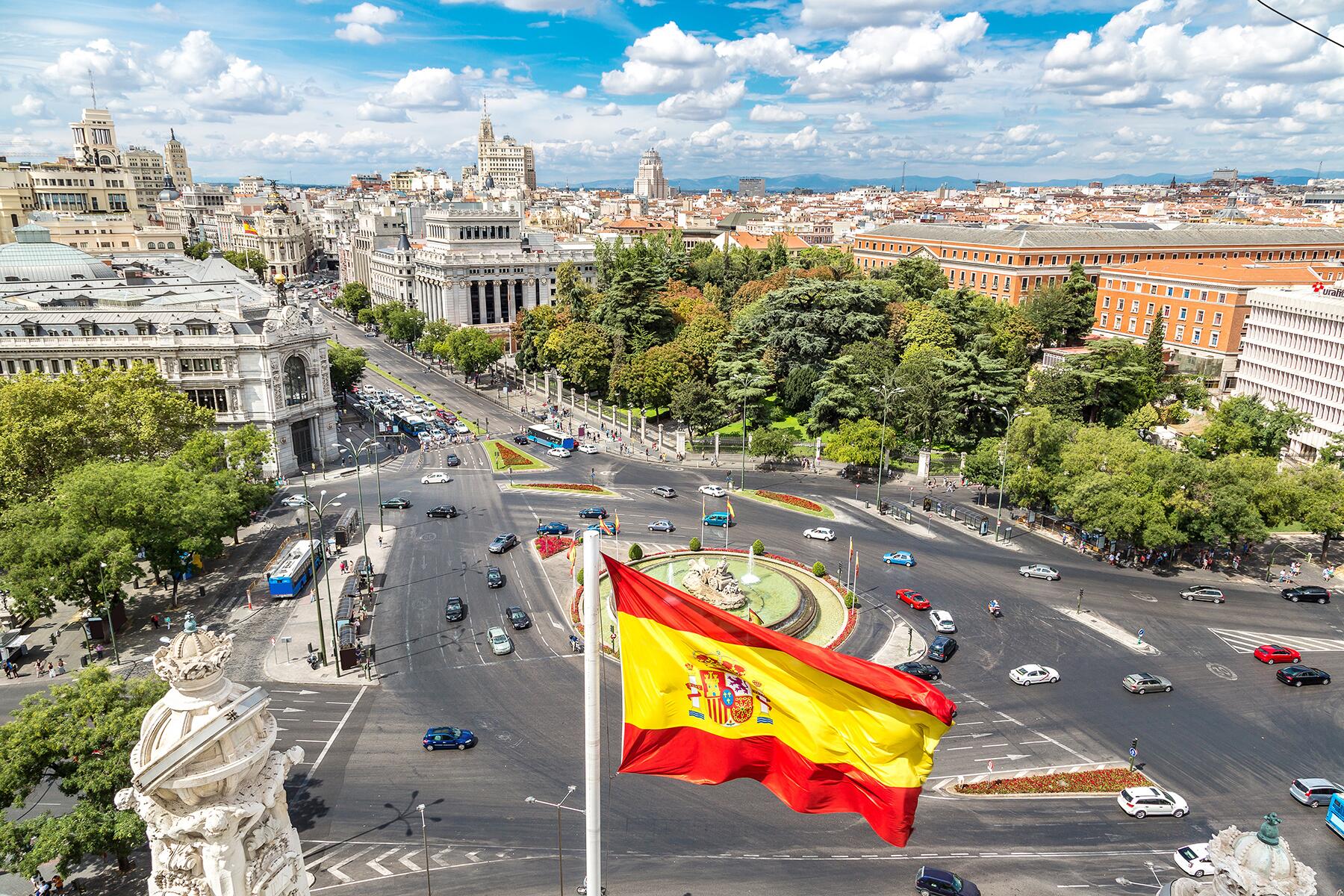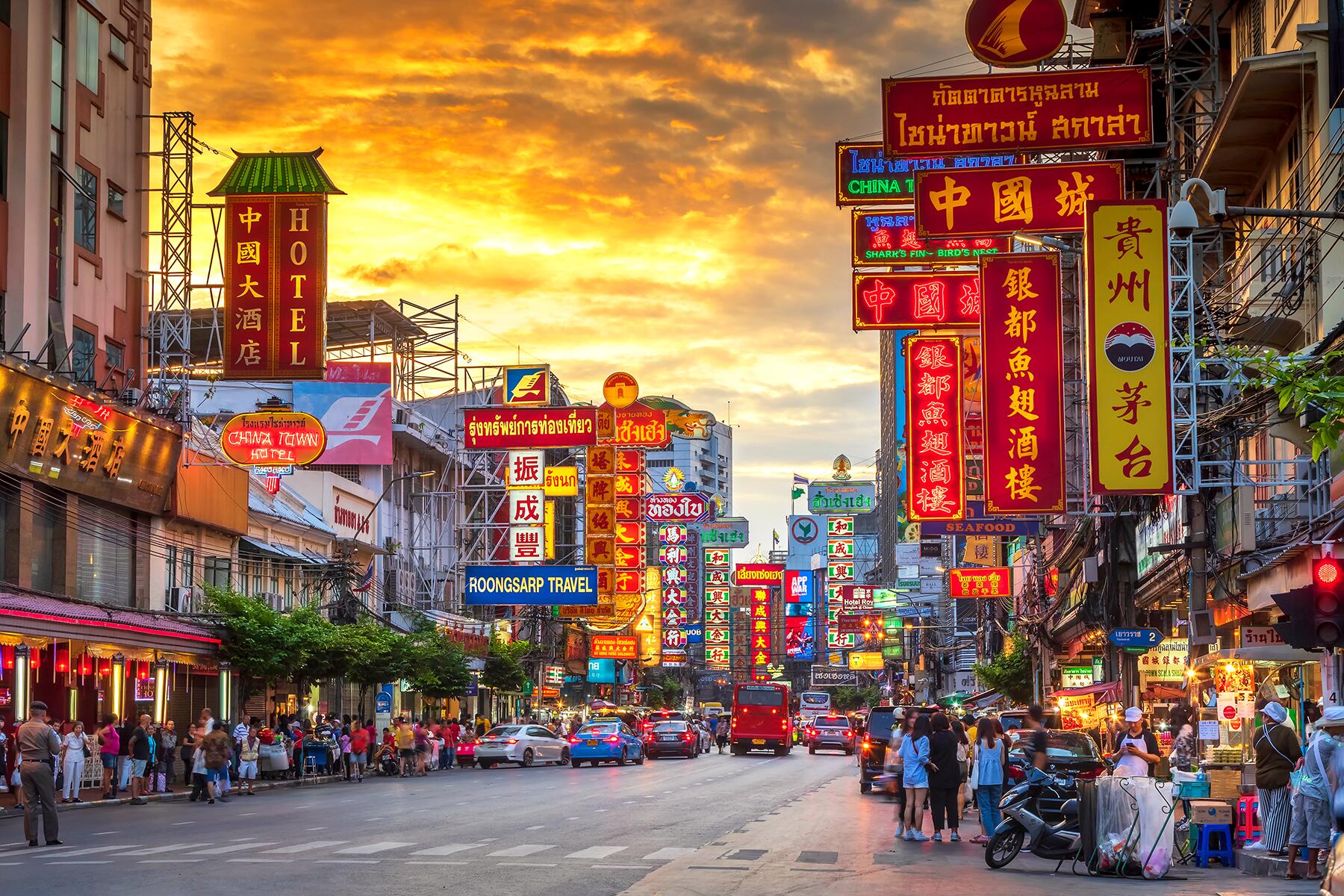From New York to Melbourne, these Chinatown neighborhoods infuse their cities with authentic cuisine and culture.
Whatever city you travel to, chances are, you’ll find a Chinatown. These unique districts were settled by a predominantly Chinese population who have brought their traditions, culture, food, and shops to cities around the globe.
While Chinatowns are always popular during the Chinese New Year celebrations, in the wake of increased anti-Asian attacks resulting from the COVID-19 pandemic, it has never been more critical to support these diverse neighborhoods year-round. Whether you’re strolling through San Francisco’s Chinatown or eating dim sum in New York, Chinatown will always promise great food, exciting markets, and culture that can transport you across the globe.
Top Picks for You
San Francisco, USA
Marked by the beautiful Dragon Gate with its green roofs, San Francisco’s Chinatown— between Stockton Street and Grant Avenue—is the largest Chinatown outside of Asia and the oldest in North America. Sadly, during the COVID-19 pandemic, people stopped coming to the neighborhood, causing many local businesses and restaurants to reach the brink of bankruptcy. While visiting San Francisco, make sure to come by and support its Chinatown businesses–the Golden Gate Fortune Cookie Factory is an institution.
New York City, USA
New York City is blessed with two bustling Chinatown neighborhoods in Manhattan and Flushing, Queens. If visiting the city, chances are you’ll visit Manhattan’s Chinatown, which offers a slew of delicious eateries and charming shops to support. If you are headed to Manhattan, don’t skip on Nom Wah Tea Parlour, the city’s first dim sum restaurant dating back to the 1920s.
Recommended Fodor’s Video
London, England
In the heart of London, bordering Soho and the Westend theatres, Chinatown is a colorful experience with red flags, lanterns, and dragons everywhere. At night, the many restaurants, bubble tea cafes, speakeasies, and karaoke bars attract Londoners and visitors alike. But aside from its happening nightlife, there is also plenty of art to discover in London’s Chinatown neighborhood. Check out Chinatown London for upcoming events.
Melbourne, Australia
Melbourne’s Chinatown—stretching between Little Bourke Street to Spring Street—is reportedly the oldest continuous Chinese settlement in the Western world and the oldest Chinatown in the Southern Hemisphere. Chinese immigrants settled here during the Victorian Gold Rush in the 1850s, and every Lunar New Year holds one of the world’s biggest dragon stalks, which requires 200 people to operate it. See the dragon in the Chinese Museum in Cohen Place if you are visiting outside of the New Year’s celebrations.
INSIDER TIPMelbourne’s Chinese Museum is temporarily closed due to the COVID pandemic. Make sure to visit their website for updates on their reopening.
Toronto, Canada
In Toronto, it is easy to get confused when looking for the city’s Chinatown. There used to be an old, original one, but the residents were relocated to Dundas West and Spadina in the 1950s when the area was cleared for a new City Hall.
According to locals, there are six different Chinatowns, with Central Chinatown being the largest. With so many restaurants and shops standing shoulder-to-shoulder, it’s best to go on a local food walking tour to get the lay of the land.
Lima, Peru
Lima’s Barrio Chino, or China neighborhood, is home to the largest Chinese population in Latin America. In the heart of the old town, the quarter has had its share of bad luck with near-destruction in the mid-1800s during the War of the Pacific and destruction and looting during the Labor Riots in 1918.
Numbers declined, but new life was breathed into the old neighborhood in the late 1990s, in time for its 150th anniversary. The lifting of the ban on Chinese immigration has restored Lima’s Barrio Chino to its bustling self, with 6,000 restaurants to choose from.
Havana, Cuba
Another Barrio Chino can be found in Havana, Cuba. Once considered Latin America’s largest Chinatown, back in the 1840s, Chinese workers were brought in from Guangdong to work on the Cuban sugar plantations, followed by two more waves of Chinese immigrants over the years.
The Barrio Chino de la Habana was populated by primarily male Chinese immigrants, who mixed with the local population and eventually left the confines of the original barrio. Recently, there have been moves to resurrect the Chinese culture in Havana by celebrating the food, traditions, and language. The most typical street to visit is Cuchillo Street, behind the Capitol Building.
Amsterdam, Netherlands
Between the Niuwmarkt market square and the forever popular Red-Light District, Amsterdam’s Chinatown is more akin to that of Paris, with many other Asian nationalities living and working there. Two must-do sights are the He Hua Temple, which houses the largest Chinese Mahayana Buddhist monastery in Europe, and the oldest Asian shop in Amsterdam, Toko Dun Yong, where you can get specialist ingredients and pretty bowls, as well as other kitchen utensils.
Johannesburg, South Africa
In Johannesburg, you can find two Chinatowns—the old one, settled by immigrants arriving to work in the gold mines of Transvaal, and the newer one, which was an overspill area and settlement for more recent Chinese migrants.
Old Chinatown is located around Commissioner Street, and New Chinatown is in the neighborhood of Cyrildene. New Chinatown is the more popular one today, but that said, the old Chinatown is more atmospheric and where you will find Jo’burg’s—and indeed South Africa’s— oldest Chinese restaurant, the Swallows Inn.
Vancouver, Canada
At the end of the 1800s, Chinese workers moved to Vancouver to work in the mines and on the Trans-Canada railway. Now, this Chinatown is North America’s third-largest after New York City and San Francisco. Apart from specialty stores and restaurants, Vancouver’s Chinatown also has a beautiful garden, Dr. Sun Yat-Sen Classical Chinese Garden, featuring pagodas, fish ponds, miniature trees, tea ceremonies, and free history tours.
Paris, France
The Quartier Asiatique, or the Asian Quarter, is hidden away in the 13th arrondissement in the southeast of Paris, where few tourists ever find themselves. Bordered by Avenue de Choisy, Avenue d’Ivry, Boulevard Masséna, and the complex Les Olympiades, the Parisian ‘Chinatown’ truly is more Asian, with mostly Vietnamese who settled in the area first. It is a neighborhood dominated by high-rise apartment blocks, many of them adorned with gigantic murals that often depict Asian themes. There, you will find Asian supermarkets, such as Tang Freres and Paris Store, both on Avenue d’Ivry, offering a superb selection of spices, vegetables, and other Asian ingredients.
Kolkata, India
Arriving in Kolkata—or Calcutta as it was called under British rule—Chinese refugees settled in Kolkata’s Chinatown, known as Tiretta Bazaar or Old China Market. Not just a market, but an entire neighborhood, it was settled by immigrants fleeing war and famine in Southern China in the early 19th-century.
Despite being there for three generations, the Chinese Indians who live and work in the neighborhood have suffered severely during the pandemic from people boycotting their stores and restaurants. Tiretta Bazaar is famous for its authentic Chinese breakfast, served very early in the morning. Between 6 AM and 8:30 AM, you can feast cheaply on dishes like momo dumplings, zong rice dishes, pork rolls, bao buns, and wontons.
Bangkok, Thailand
Another contender for the title of largest Chinatown in the world is Bangkok’s Chinatown, which is truly sprawling. This Chinatown is also one of the most vibrant with its day and night markets, street food stalls, delicious smells, and colorful neon signs. Originally formed in 1782, making it one of the oldest Chinatowns in the world, the entire neighborhood was relocated to Yaowarat Road in the Samphanthawong District where it remains today. Don’t miss Wat Traimit, the Temple of the Golden Buddha, which houses the world’s largest golden Buddha, weighing in at 5.5 tons.
Singapore, Singapore
Much of Singapore’s population is of Chinese origin, but that does not take away from the fact that it has a distinct Chinatown neighborhood, which stands out with its traditional shophouses and markets on and around Smith Street. Despite its distinctive Chinese look, this neighborhood is also famous for its Hindu Sri Mariamman Temple, the Buddha Tooth Relic Temple, and the time-capsule National University of Singapore (NUS) Baba House.
Manila, Philippines
Manila’s Chinatown is called Binondo, and it is indeed the world’s oldest Chinatown, established in the 1590s. Originally founded by Spanish missionaries as a settlement for Catholic Chinese, it was located across the river from the walled Intramuros part of the city. Today, it is not only a slice of history but probably one of the most authentic and least touristic Chinatowns in the world.
The Filipino-Chinese Friendship Arch, doubling as the entrance gate to Binondo, is one of the most colorful and pretty of them all. Try the Chinese-Filipino fusion street food on and around Ongpin Street, and don’t skip on sampling dishes such as lompia spring rolls, hopia ube cake, stir-fried noodle dish pansit guisado, and the siopao steamed buns.





